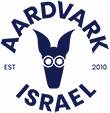Next year, Eytan Stibbe is set to become the second Israeli to go into space when he travels to the International Space Station as part of Axiom Space’s AX1 mission. Stibbe, who is a former air force fighter pilot, will be bringing forty-four experiments put together by Israeli scientists to carry out on the Station.
The mission is the first to the ISS that will be manned entirely by private astronauts and Stibbe will be covering the $50 million cost of his trips and the experiments. Not all of the experiments are to do with space; rather, they are taking advantage of the unique conditions found in space to test ideas and technology from a wide range of fields.
Speaking at a conference in early May, Stibbe said, “Research in space is meant to break the boundaries of human knowledge, the attempts to resolve the unsolvable and decipher the unknown. What started out as a dream is taking shape before our eyes. The depths of a whole and fascinating world opened up before me, and every day I’m learning something new – thanks to you.”
The Israel Space Agency and the Ramon Foundation held the conference. It was announced that the experiments will come from the fields of optics, engineering, energy, agriculture, medicine-neurology, communications, astrophysics, medicine-ophthalmology, medicine-medical devices and medicine-biology.
Furthermore, the experiments have been submitted from a wide range of sources including universities, start-ups, hospitals and even schoolchildren.
For example, the Sheba Medical Center is sending a number of experiments, one of which will look at the effects of space on the virulence of Salmonella enterica bacteria and specifically how microgravity conditions affect their growth. Another experiment will look at anti-viral T cell activation and the production of a T-cell bio-bank for astronauts.
The Israeli company StoreDot has collaborated with the Israel Electric Corporation to test fast charging technology for ion-lithium batteries that may be used in electric vehicles. According to the company, the conditions in space will allow it to find irregularities on the surface of the batteries’ anodes.
Some of the experiments have a distinctly Israeli flavour. SpaceIL co-founder and Stanford PhD candidate Yonatan Winetraub are sending an experiment called “Space Hummus.” They will be growing chickpeas on the ISS using optogenetics, a tool that controls plant growth. The idea is to see how suited chickpeas would be for spaced-based agricultural efforts.
Another exciting experiment is from the Oncology Department and Schneider’s Children Medical Center. Researchers at the center want to see how sub-gravity affects malignant cells with or without chemotherapy. The experiment will look at the changes in gene expression and in the proliferation of malignant cells in instances of T-ALL leukaemia in sub-gravity conditions. They hope to find new ways to treat the cancer that are less toxic and more effective.
There will be experiments looking into many more things, such as brain wellness in astronauts, whether liquids in space can be shaped into optical elements, and more. The experiments are still subject to approval from NASA and Axiom Space, but it looks set to be a hugely exciting trip for many Israeli researches.
For instance, within Jerusalem there are a few spots that are not exactly secret, but are certainly off the beaten track. A great example of this is the roof of the Austrian Hospice in the Old City. The roof is easy to access and offers some stunning views together with a bit of peace and quiet, which is in stark contrast to the streets below. You have to ring the bell to gain entrance, but there is no charge and you can simply head up via the stairs or the lift.
Another excellent spot to visit in Jerusalem is the amphitheatre on the Hebrew University’s Mount Scopus campus. The amphitheatre was first built in 1925; it was a wooden structure prepared for the university’s opening ceremony. The current stone version was built around a decade later and while sitting there, you can enjoy amazing desert views that reach all the way to Jordan. Furthermore, you could also pay a visit to the nearby university botanical gardens.
If you are based in Tel Aviv then you can also find some equally impressive spots. For example, Saint Peter’s Church, a bright pink Russian Orthodox Church, can be seen rising above the treetops in south Tel Aviv. The complex, which was built in the 19th century, includes a church and a monastery and it is open to the public for just a short period each week. If you are in Tel Aviv and you are looking for a bit of greenery to escape the city, then it is definitely worth a visit.
Not far away in Jaffa, you can find the Midron Slopes beach. As the name suggests, the beach slopes down towards the sea and it is in the Ajami neighbourhood. It is home to large grass lawns, bike paths, walking trails, and some sand. Despite this, somehow it fails to draw the large crowds found at other beaches in the area, making it the perfect place to relax. If you head there on a Friday night then you will likely find families enjoying dinner in a truly friendly atmosphere.
About half an hour south of Tel Aviv is Ashdod. As a coastal city, it of course has beaches and one of the beaches is home to a fortress. Arab rulers built the fortress in the seventh century, and it was then used hundreds of years later to help defend the country from the Crusaders. This was ultimately unsuccessful and the Crusaders themselves took over the fortress. Today it is a lovely area to walk around, and it is even used by some couples as a wedding venue thanks to its beautiful views.
If you want to escape the madness while on your gap year, consider a visit to one of the above, as you are sure to find it highly relaxing.

















